Product LCA Software for Fashion
Run LCAs across your full catalogue — always up-to-date, granular, and powered by primary data.
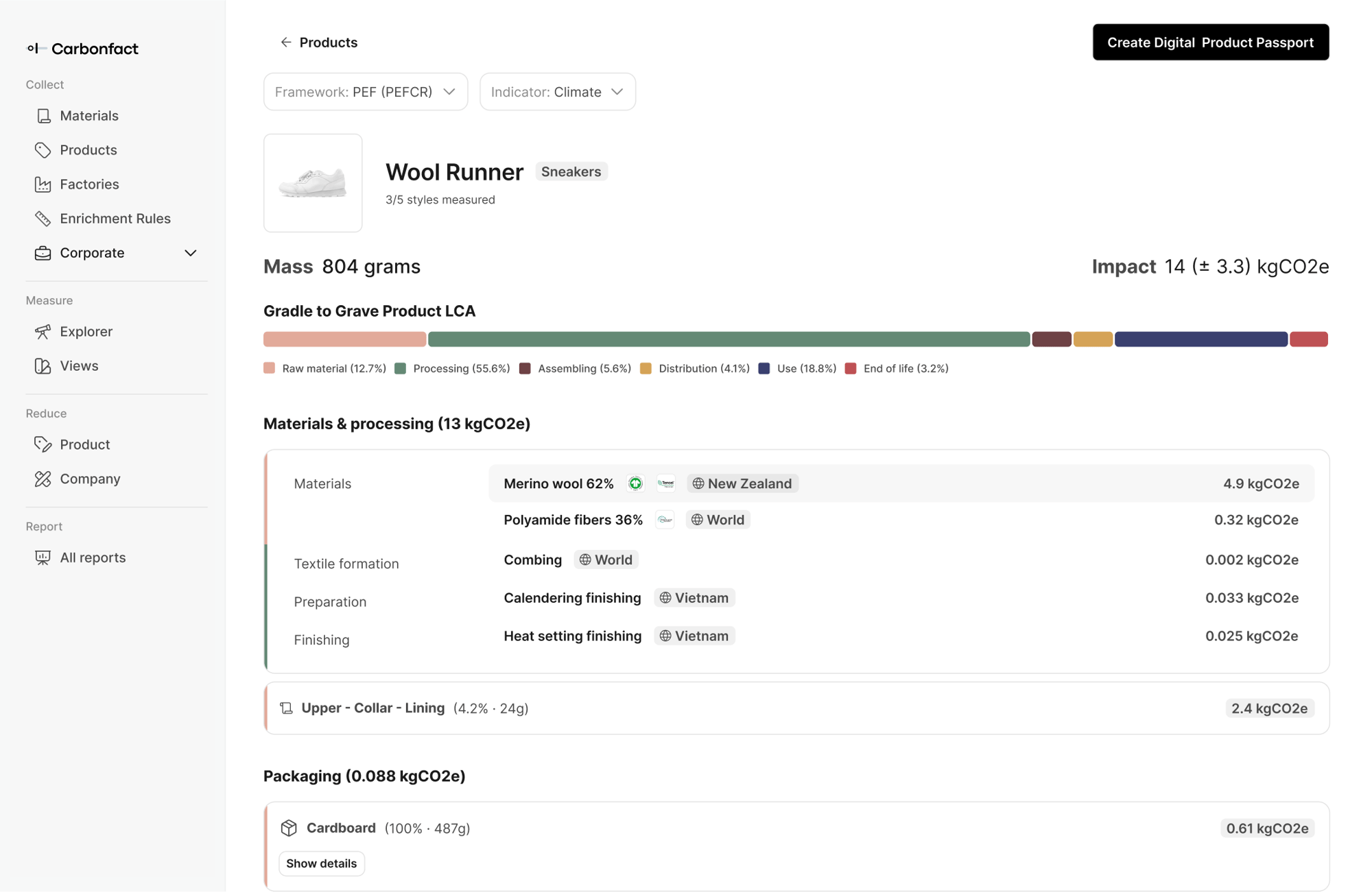
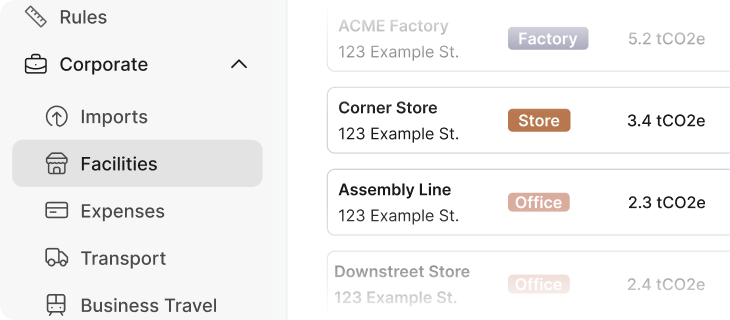
Identify hotspots, know where to act
Drill into emissions by product, process, or factory — and get clear direction on what to tackle first.
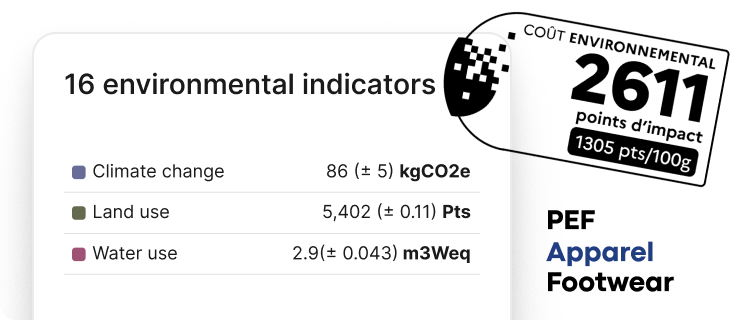
Comply with PEFCR and Eco-Score
Measure all 16 environmental indicators, compare against category averages, and simulate score improvements in Eco-Design.
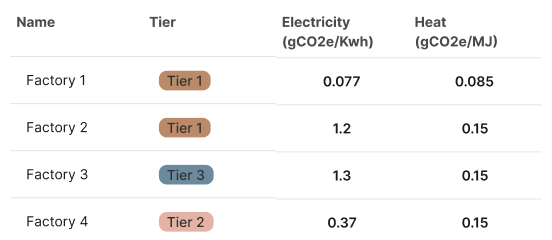
Your full supply chain in one view
Add your own energy data per factory — and tap into emissions data from 38,000+ factories shared by other brands through the Carbonfact Data Exchange Network.
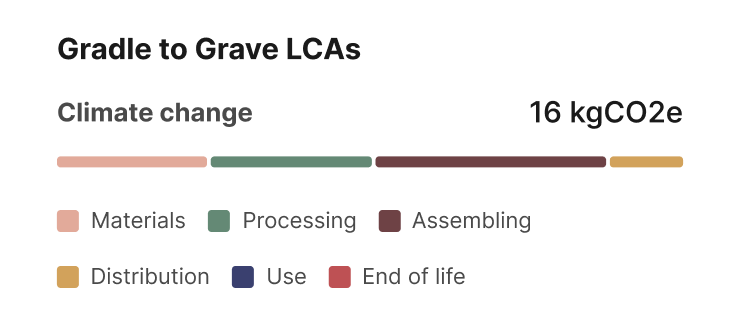
Full gradle-to-grave LCAs
Carbonfact measures the impact of your products throughout their entire lifecycle, from raw materials to transportation, distribution use, and end-of-life.
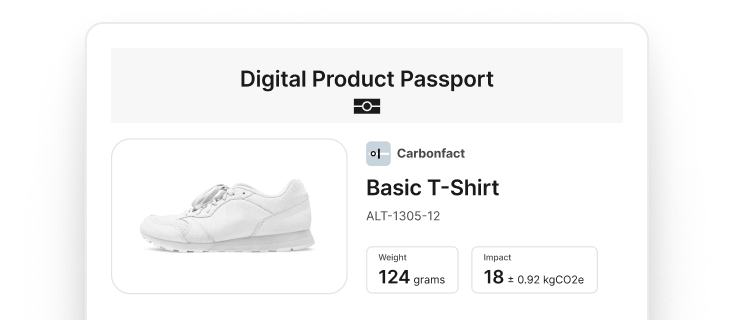
Instant DPPs for every SKU
Automatically create compliant Digital Product Passports for each products including QR code and URL.
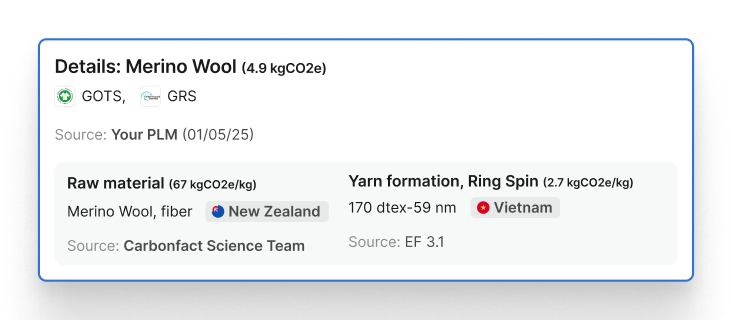
Transparent calculations, audit-ready
View the source, method, and emission factor behind every calculation. Aligned with GHG Protocol, PEFCR, ISO14040 and reviewed by PwC.

Identify hotspots, know where to act
Drill into emissions by product, process, or factory — and get clear direction on what to tackle first.

Comply with PEFCR and Eco-Score
Measure all 16 environmental indicators, compare against category averages, and simulate score improvements in Eco-Design.

Your full supply chain in one view
Add your own energy data per factory — and tap into emissions data from 38,000+ factories shared by other brands through the Carbonfact Data Exchange Network.

Full gradle-to-grave LCAs
Carbonfact measures the impact of your products throughout their entire lifecycle, from raw materials to transportation, distribution use, and end-of-life.

Instant DPPs for every SKU
Automatically create compliant Digital Product Passports for each products including QR code and URL.

Transparent calculations, audit-ready
View the source, method, and emission factor behind every calculation. Aligned with GHG Protocol, PEFCR, ISO14040 and reviewed by PwC.
CHOSEN by Hundreds of BRANDS AND SUPPLIERS
LCAs for your Full Catalogue,
Without the Manual Work
Life cycle assessment software built for apparel, fashion, textile and footwear
LCAs build on primary data, without chasing suppliers
Get access to emissions data from 7000+ factories, collected from other brands — verified and shared through Carbonfact.
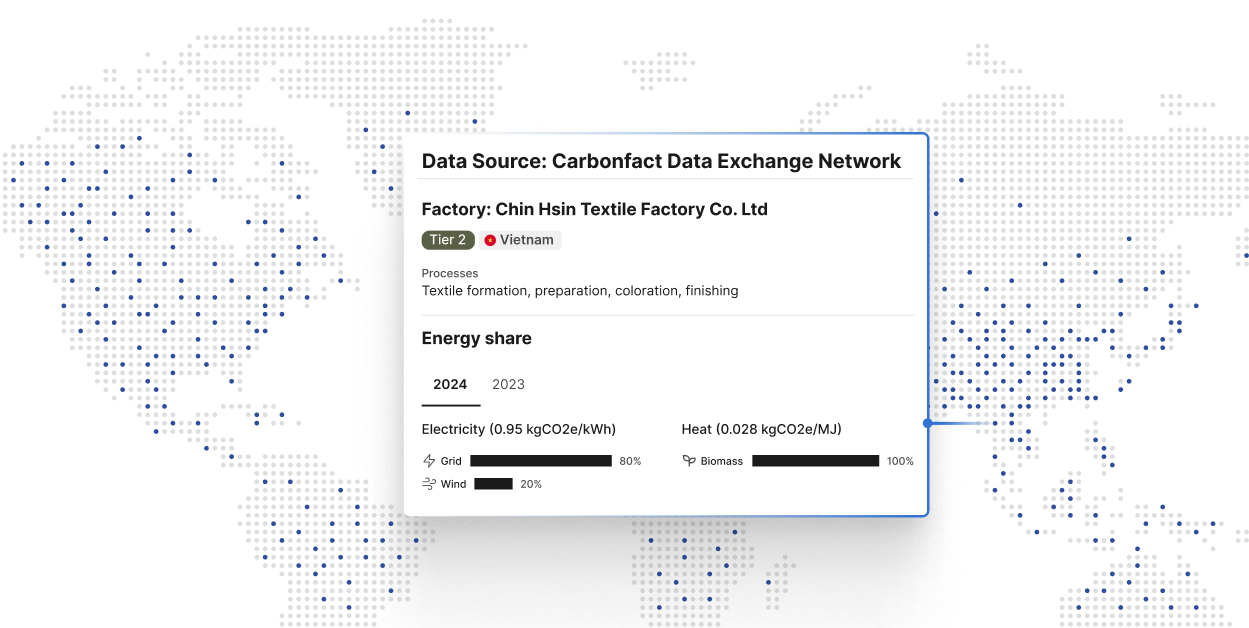
Designed for complexity: multi-sourcing, sizes, and SKUs
Get SKU-level LCAs with detailed impact breakdowns by color, size, and supplier, even for the most complex products.
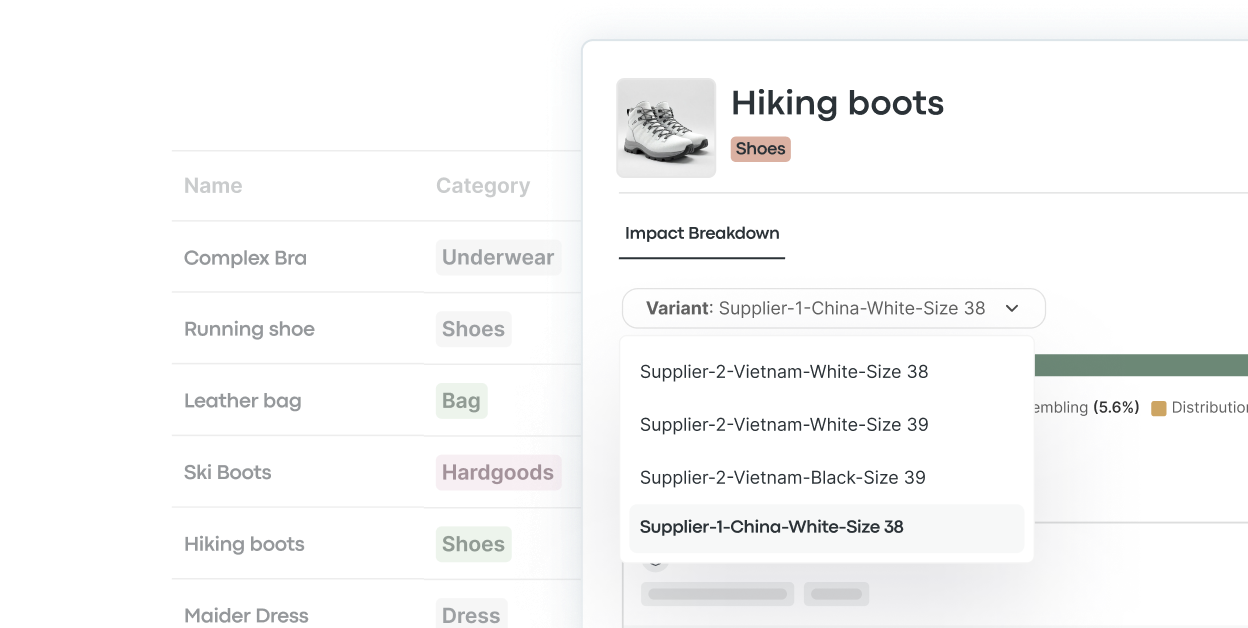
Granular LCAs with bespoke emission factors
Benefit from a rich library of new materials and processes, or send us your supplier LCA and we’ll add it to our platform.
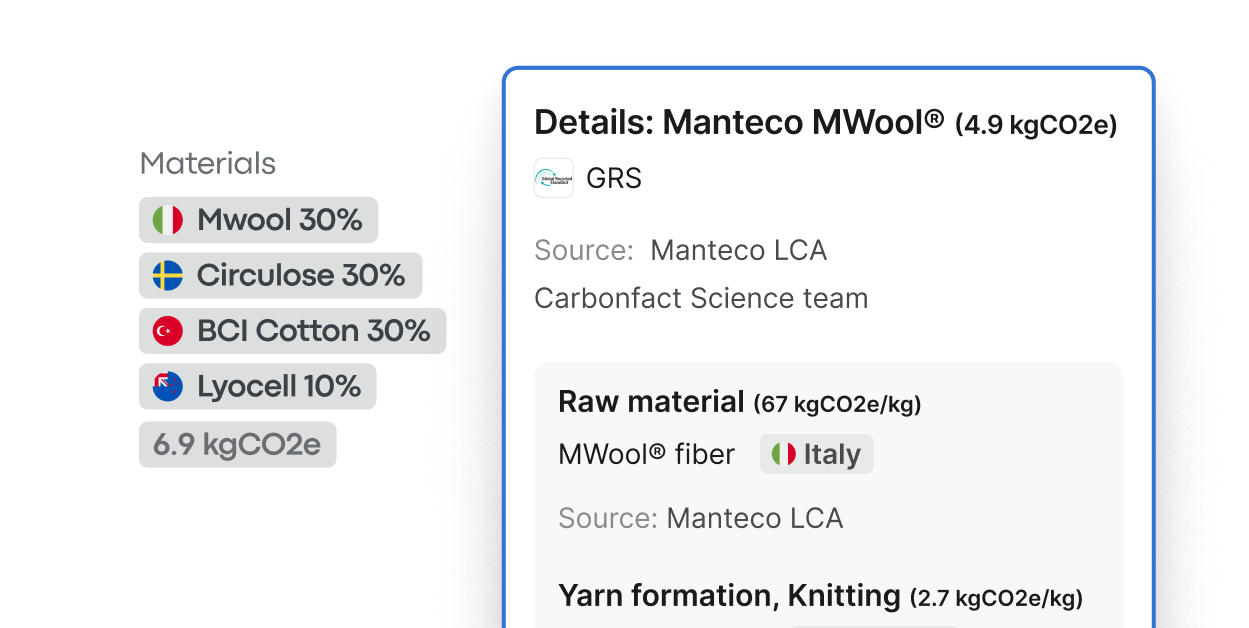
More accurate footprints, even with data gaps
No dtex? No weight? No problem. We automatically fill your data gaps using smart rules built from running over 50 million LCAs.
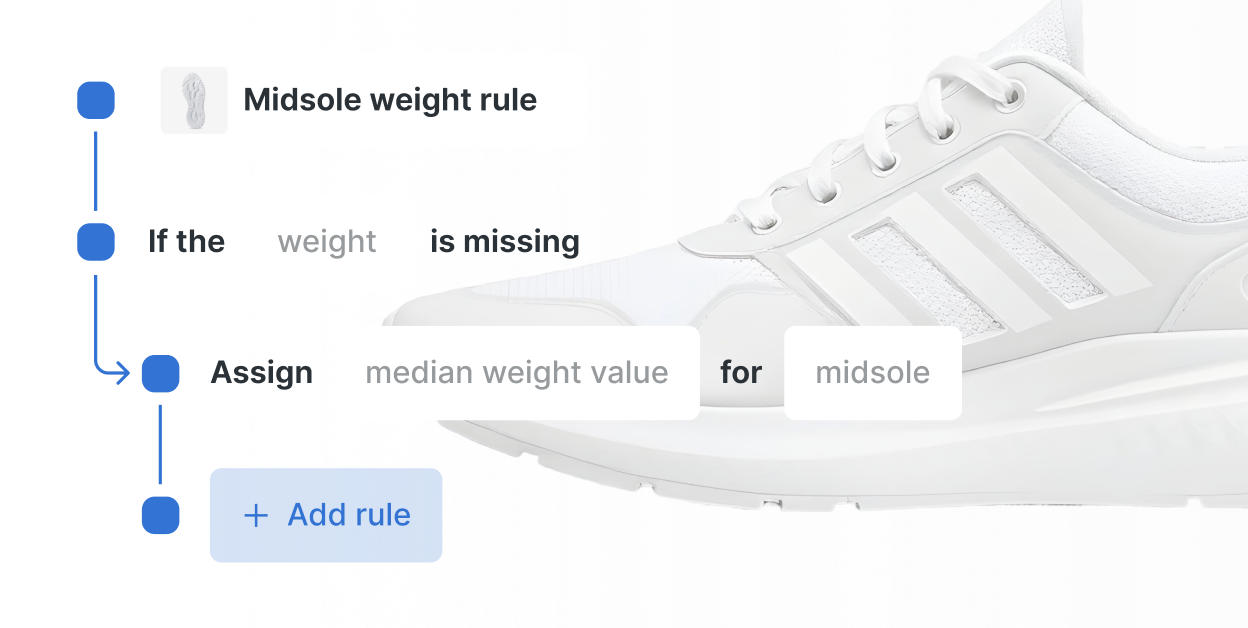
Security and compliance
Report and reduce — with a team of data experts by your side.

ISO 14040-44
Methodology independently reviewed by PwC.

EU PEFCR
Meets EU standards for product-level disclosure.

SOC 2 certified
Enterprise data security, availability & confidentiality.
French Eco-Score
Calculates French environmental costs.
Data Management. End to End.
We consolidate, clean, normalize and enrich your data. With
Flexible Data Ingestion
We make it easy to get started — even with limited data. Carbonfact ingests bills of materials, care labels, product attributes, purchase orders, supplier information, and factory data in whatever format you already use. Many brands start with simple Excel exports, then move to custom connectors and live integrations with their PLMs, ERPs, data warehouses, or even Google Sheets for automatic updates.
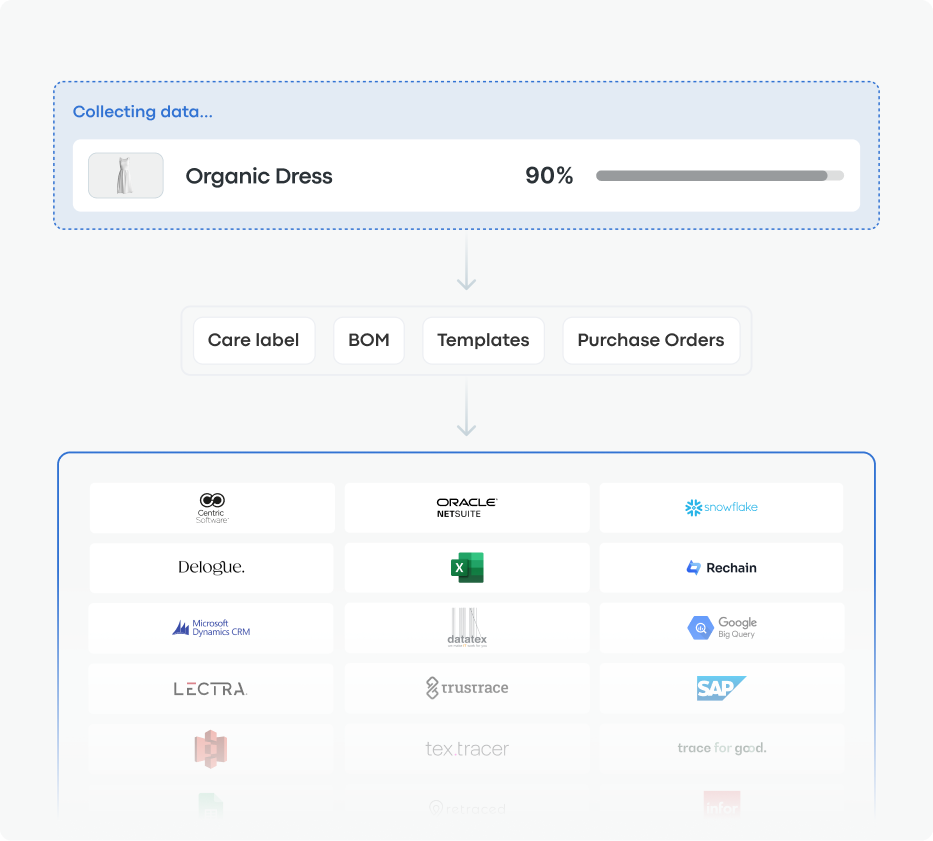
Automatic Data Cleaning
Carbonfact automatically cleans and structures your data — fixing typos, parsing care labels and BOMs, and converting everything into consistent units. “Even when product data comes in many variations, we map it to our taxonomy so everything is standardized. Our A also spots anomalies (like a T-shirt listed at 10 kilos) and flags them for review. The result: clean, reliable, audit-ready data you can trust.
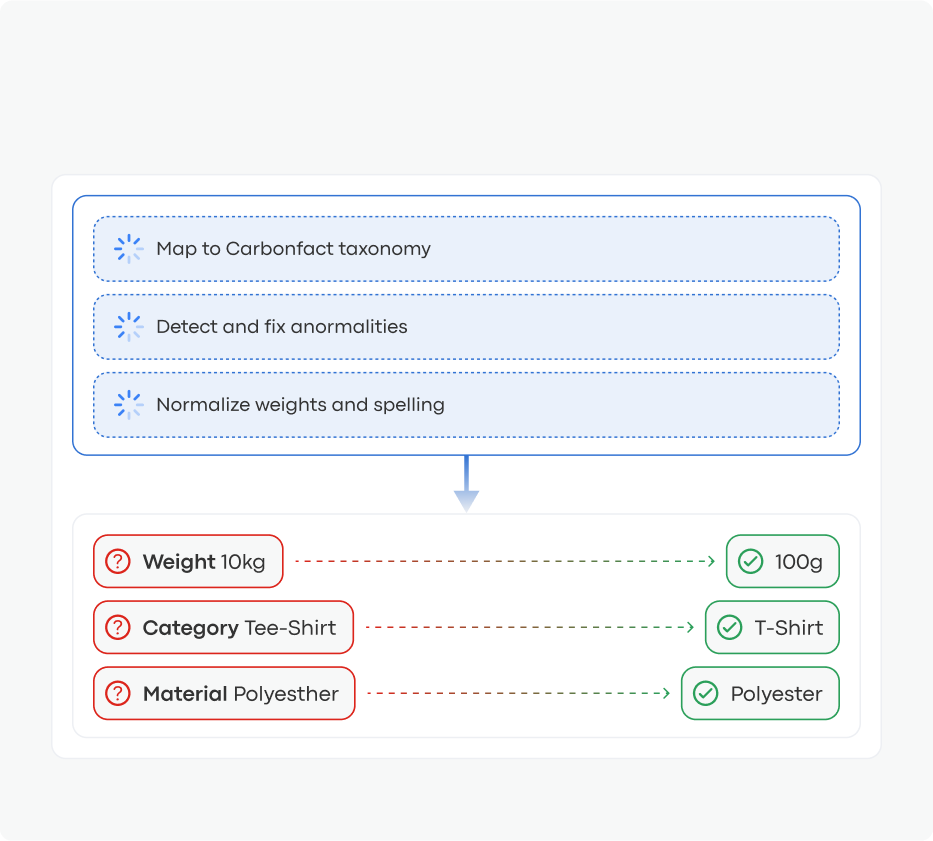
Smart Data Enrichment
Gaps and errors in your data are normal — and that’s where Carbonfact adds value. We use heuristics — smart estimates trained on Carbonfact’s dataset (e.g. missing d-tex or weights) and rules — information you know but that isn’t stored in your systems (e.g. this supplier always uses recycled packaging). We enrich this further with global emission factor libraries and bespoke factors for unique materials and processes. The source of every data point is transparent and flagged, giving you a complete, consistent dataset you can trust.
Human Quality Ensurance
While our platform handles the heavy lifting, our team of engineers, climate, compliance, and data experts is there to support you every step of the way 💪.

A Platform to Evolve With
From carbon accounting to compliance to decarbonization — all in one place
Carbon Accounting
Switch from consultants to fully transparent, fashion-specific carbon accounting.
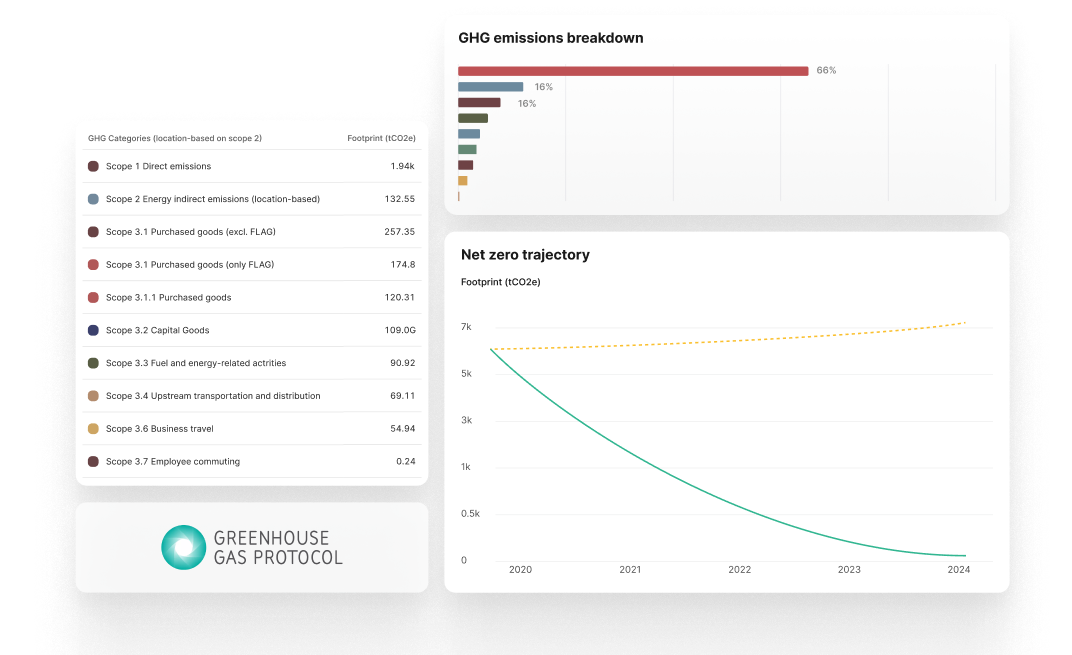
Decarbonization
Model product and company-wide reduction scenarios using your real data.
Reporting
Simplify compliance with automated, audit-ready reports.
Product LCAs
LCAs across your full catalogue – powered by primary data.
Data Management
Connect your systems – we’ll clean, map, and enrich your data.
A Platform to Evolve With
From carbon accounting to compliance to decarbonization — all in one place
Carbon Accounting
Switch from consultants to fully transparent, fashion-specific carbon accounting.

Decarbonization
Model product and company-wide reduction scenarios using your real data.
Reporting
Simplify compliance with automated, audit-ready reports.
Product LCAs
LCAs across your full catalogue – powered by primary data.
Data Management
Connect your systems – we’ll clean, map, and enrich your data.
What Our Customers Say









Get Started with Fashion-Specific Life Cycle Assessments
Solutions for first-timers and frontrunners
Frequently Asked Questions
How does Carbonfact handle data gaps when primary data is not available?
Carbonfact uses a three-step approach to fill data gaps accurately and transparently.
- We rely on Carbonfact heuristics — smart estimates based on a proprietary database of more than 50 million LCAs built from our work with over 200 fashion brands. These estimates are far more precise than generic industry averages because they’re based on real, anonymized data from similar products. For example, for the yarn size (Dtex) heuristic for pants, Carbonfact analyzed 8,894 data points specifically for pants.If Dtex is missing, Carbonfact can automatically fill that gap using actual values from comparable products in our database.
- You can easily fill data gaps using your own team’s knowledge — even if it’s not captured in your PLM or other internal systems. For instance, if you know that all your T-shirts are knitted but that information isn’t recorded in your product database, you can simply set that rule in the platform and apply it across your range. You can also turn supplier information — like answers from energy surveys — into enrichment rules that apply automatically across factories.
- Finally, Carbonfact also uses trusted external databases such as Ecoinvent, EF 3.1, and Ademe.
- And when none of those provide the needed data, our in-house science team can create custom emission factors based on the latest scientific research.
How does Carbonfact work?
- We collect the data you already have.
You don’t need to fill out templates. We connect directly to your systems (like PLM or ERP), or simply use Excel or CSV exports. Even if your data isn’t perfect, that’s okay — we start with what’s available. - We calculate product-level LCAs at scale.
Carbonfact automatically calculates cradle-to-grave Life Cycle Assessments (LCAs) for 100% of your product catalog — including variations in size, color, material, and supplier. Calculations are aligned with ISO 14040 and the EU PEFCR, and we support all 16 environmental indicators, not just carbon. - We fill in data gaps intelligently.
Missing data? No problem. We use fashion-specific heuristics (based on 50M+ real product LCAs), your own brand knowledge (even if it’s not stored in your systems), trusted databases like Ecoinvent and EF 3.1, and our in-house science team to fill gaps transparently. - We give you instant insights.
You get dashboards showing emissions by material, supplier, factory, product category, and more. You can filter by brand, region, season — whatever makes sense for you. - You can simulate product changes.
Want to test the impact of switching from conventional to recycled cotton? Or changing dyeing techniques or supplier location? Our eco-design simulation tools let you run “what if” scenarios in seconds. - We support your compliance and reporting. Carbonfact is audit-ready and peer-reviewed. You can automatically generate reports for CSRD, French Eco-Score, DPP, CDP, SBTi, and more — without manually wrangling data.
Our data is messy, can we work with you?
Yes! After working with 200+ fashion and footwear brands, there is nothing that we haven’t seen. Whether you’re managing data across 10 different Excel sheets or have a sophisticated ERP and data warehouse setup, we are confident in our ability to ingest your data.
Before we start working together, we will ask you for a small sample of your data, and our data team will have a look to be 100% sure.
Once we start working together, we clean your data and optionally build a custom connector that automatically imports data from your systems.
What data do I need to get started?
Getting started with Carbonfact is easier than you might expect. To begin calculating LCAs across your product catalog, we only need a few key data points.
In Phase 1 you’ll need to provide your product’s unique identifier (SKU), the product category, and the composition as listed on the care label — like “80% cotton, 20% polyester.” We also need to know how many units were ordered and the dates of those orders. That’s all it takes to establish a solid foundation.
If possible, we also recommend including the product weight (excluding packaging). While not required, this helps improve accuracy from day one.
In Phase 2, we improve accuracy. We incorporate additional data such as bills of materials with component weights, factory locations and energy mixes, transportation methods, and manufacturing process details like dyeing or weaving.
Finally, in Phase 3, we reach advanced precision. Here we can include supplier-specific energy data, loss rates at various production stages, and even primary data from tier 2 or tier 3 suppliers.
This step-by-step approach helps you move fast, get results early, and improve over time — without needing to clean up everything upfront.
What types of data sources can the platform integrate with?
Carbonfact can integrate with various data sources, including ERPs, PLMs, traceability solutions, data warehouses (e.g., Snowflake, BigQuery), and structured files (.csv, .xls). The platform is flexible and can adapt to different data formats and systems, as long as the format is consistent and machine-readable.




